Directions (1-6): Find the wrong term which does not follow the pattern that other numbers follow in the following number series:
Q1. 2 , 3 , 5 , 7 , 9 , 13 , 17, 19
(a)5
(b)9
(c)7
(d)13
(e)2

Q2. 1 , 7 , 20 , 39 , 69 , 111 , 167
(a)1
(b)39
(c)20
(d)111
(e)167
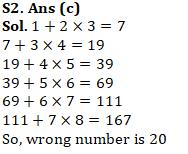
Q3. 10 , 17 , 26 , 35 , 50 , 65 , 82
(a)10
(b)50
(c)82
(d)17
(e)35
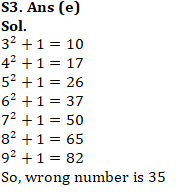
Q4. 22 , 29 , 45 , 64 , 92 , 127 ,169
(a)45
(b)29
(c)22
(d)127
(e)92
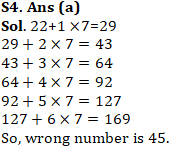
Q5. 76 , 78 , 77 , 79 , 74 , 80 , 73
(a)79
(b)78
(c)77
(d)74
(e)80
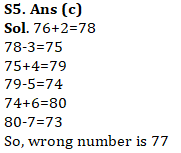
Q6. 79,78, 76, 72, 64, 50, 16
(a)79
(b)76
(c)72
(d)64
(e)50
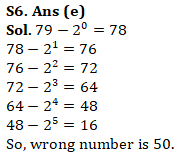
Direction (7-10): What should come in place of the question mark (?) in the following questions?
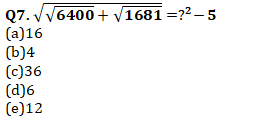
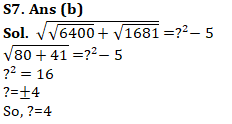
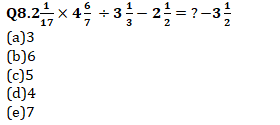
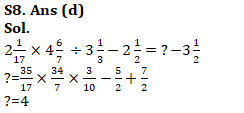
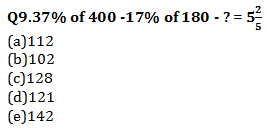
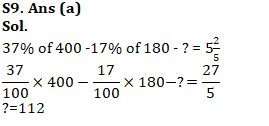
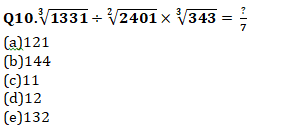
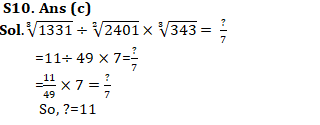
Q11. The difference between simple interest and compound interest on a sum of Rs 2125 for 3 years is 272. Then Find out the rate of interest?
(a) 12%
(b) 18%
(c) 15%
(d) 20%
(e) 22%

Q12. A is 2 times more efficient than B and 9 times efficient than C. if A and B together can do a piece of work in 17 days. In how many days C can do same piece of work?
(a)198 days
(b)204 days
(c)160 days
(d)192 days
(e)196 days


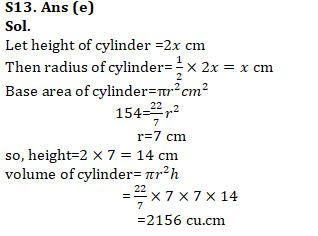
Q14. The ratio of the ages of veer and Vikram 15 years ago was 2:1 and their ages difference 5 years ago was 10 years, then find out the ratio of ages of veer and Vikram 15 years hence?
(a) 3:4
(b) 2:5
(c) 5:4
(d) 5:7
(e) 3:7
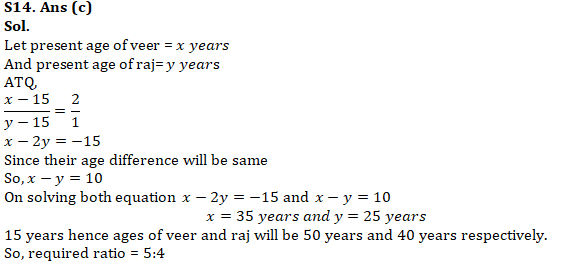
Q15. A person sells 3/7 th part of goods at 20% gain, 2/5 th parts of goods at loss of 10% and gains 25% on remaining goods. what is the overall profit/loss percentage incurred by him? (approx)
(a) 5%
(b) 7%
(c) 9%
(d) 11%
(e) 13%
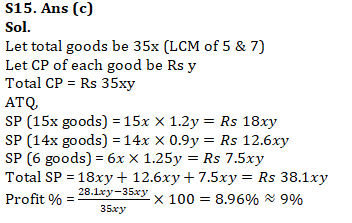
If you want to study Quantitative Aptitude for IBPS PO Prelims then you can also check out the video given below:
- Quantitative Aptitude Study Notes for Bank Exams
- Quantitative Aptitude Questions for all Competitive Exams

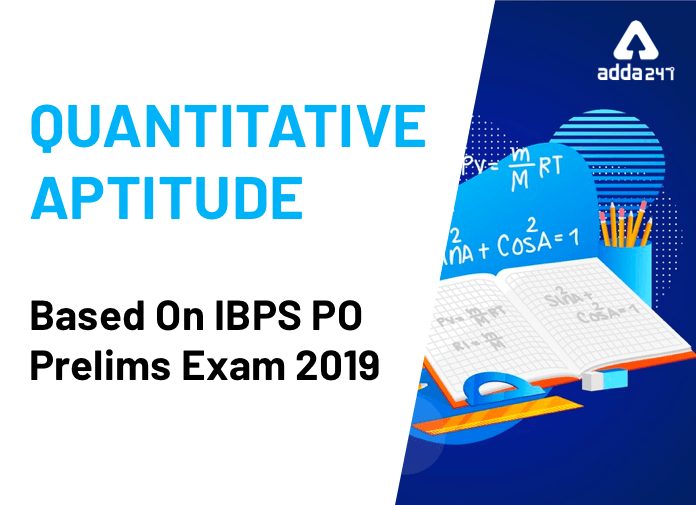



 GA Capsule for SBI Clerk Mains 2025, Dow...
GA Capsule for SBI Clerk Mains 2025, Dow...
 The Hindu Review October 2022: Download ...
The Hindu Review October 2022: Download ...
 Hindu Review March 2025, Download Monthl...
Hindu Review March 2025, Download Monthl...





